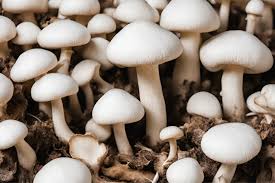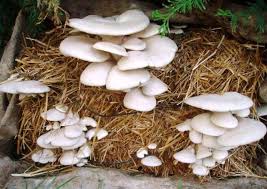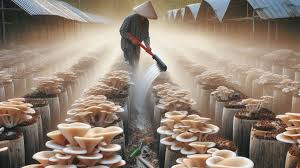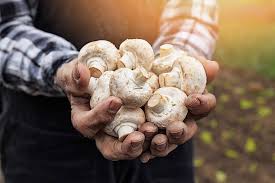Mushroom cultivation techniques are essential for anyone interested in growing mushrooms either on a small scale or for commercial purposes. With rising interest in sustainable agriculture, health, and the unique flavors that mushrooms add to various dishes, mushroom farming has gained popularity worldwide.
Mushrooms are fascinating organisms that belong to the fungi kingdom, thriving in dark, moist environments and offering a quick-growing, nutrient-rich food source. Cultivating mushrooms requires understanding their unique growing requirements, including specific environmental conditions, substrates, and proper care techniques.
Learning mushroom cultivation can not only yield a fresh supply of mushrooms for personal consumption but also create profitable opportunities in both local and global markets.
As a high-demand crop with versatile applications in cooking, medicine, and even eco-friendly packaging, mushrooms appeal to farmers, entrepreneurs, and hobbyists alike. Mushrooms are particularly valued for their nutritional benefits, as they are low in calories and rich in vitamins, minerals, and antioxidants.
Many varieties, such as shiitake, oyster, and button mushrooms, are easy to cultivate with the right techniques, while other, more delicate types like truffles or enoki mushrooms may require more advanced methods and controlled environments.
Mushroom cultivation begins with choosing the right type of mushroom and understanding its specific needs. There are three main types of mushroom cultivation techniques: the substrate-based technique, log-based technique, and bag-based technique.
Each of these methods involves different growing mediums, environments, and care practices, allowing cultivators to adapt their processes based on available resources and desired outcomes. Substrate-based techniques often involve preparing sawdust, straw, or other organic materials that can support mushroom growth.
Log-based techniques, common for shiitake mushrooms, rely on natural hardwood logs as a substrate, while bag-based techniques use sterilized plastic bags filled with prepared substrates, allowing for efficient and scalable production.
Another vital aspect of mushroom cultivation is controlling temperature, humidity, and light exposure, as mushrooms require specific conditions to grow well. For example, most mushrooms thrive in temperatures between 55°F and 75°F and require high humidity levels, often above 80%, to prevent drying out.
In addition, some mushrooms need complete darkness to begin growing, while others benefit from indirect light. By carefully managing these environmental factors, growers can optimize their yields and produce high-quality mushrooms.
In addition to the basic techniques, mushroom cultivation has expanded to include innovative methods such as indoor cultivation systems, vertical farming, and hydroponic mushroom production. Indoor systems allow growers to cultivate mushrooms year-round in controlled conditions, while vertical farming maximizes space by growing mushrooms on stacked shelves or racks.
Hydroponic production, though less common, explores using nutrient-rich solutions instead of solid substrates to support mushroom growth. These modern techniques enable growers to increase production efficiency, reduce resource use, and meet the rising demand for mushrooms in both local and international markets.
Mastering mushroom cultivation techniques opens up a wide range of possibilities, from small-scale home gardening projects to large-scale commercial enterprises. With a combination of traditional methods and innovative approaches, aspiring mushroom cultivators can enjoy a rewarding journey in this unique field of agriculture, contributing to a sustainable, nutritious, and profitable food source for the future.
Types of Mushrooms for Cultivation

1. Button Mushrooms (Agaricus bisporus): Button mushrooms are the most commonly cultivated mushrooms worldwide. They have a mild flavor and are often used in various dishes. These mushrooms come in three varieties: white, brown (cremini), and portobello. Button mushrooms thrive in a compost-based substrate rich in organic matter, making them suitable for beginners due to their forgiving nature.
2. Oyster Mushrooms (Pleurotus ostreatus): Oyster mushrooms are popular for their delicate flavor and unique shape. They come in several colors, including white, yellow, and blue. Oyster mushrooms are versatile and can be grown on various substrates, including straw, sawdust, and coffee grounds. They grow quickly and can produce multiple flushes, making them a favorite among home growers.
3. Shiitake Mushrooms (Lentinula edodes): Shiitake mushrooms are well-known for their rich, savory flavor and meaty texture. Traditionally grown on hardwood logs, they can also be cultivated on sawdust blocks. Shiitake mushrooms require a longer cultivation period compared to other varieties, but their distinct flavor and health benefits make them worth the wait.
4. Lion’s Mane Mushrooms (Hericium erinaceus): Lion’s Mane mushrooms have a unique appearance, resembling a white pom-pom. They are prized for their culinary uses and potential health benefits, particularly in supporting brain health. Lion’s Mane can be grown on hardwood sawdust or supplemented sawdust substrates. They have a moderate growth rate and are increasingly popular in home cultivation.
5. Enoki Mushrooms (Flammulina velutipes): Enoki mushrooms are characterized by their long stems and small caps. They have a mild flavor and are commonly used in Asian cuisine. Enoki mushrooms thrive in cooler temperatures and can be cultivated on sawdust or straw substrates. They require specific conditions, including low light, to develop their signature appearance.
Selecting the Right Growing Medium
1. Understanding Your Mushroom Variety’s Needs: Different mushrooms have specific substrate preferences. For example, button mushrooms prefer compost-based substrates, while oyster mushrooms thrive on straw or coffee grounds. Research the needs of the variety you wish to grow to ensure optimal growth conditions.
2. Organic Matter Content: The growing medium should be rich in organic matter, as mushrooms derive nutrients from decomposing materials. Common growing mediums include straw, sawdust, wood chips, coffee grounds, and compost. Ensure that the chosen medium is free from contaminants, such as pesticides or herbicides, which can harm mushroom growth.
3. pH Level: The pH level of the growing medium can influence mushroom development. Most mushrooms prefer a slightly acidic to neutral pH (between 5.5 and 7.0). Testing the pH of your substrate can help you make necessary adjustments, such as adding lime to raise pH or sulfur to lower it.
4. Availability and Cost: Consider the availability and cost of different growing mediums. Some materials, like straw and coffee grounds, may be readily available and inexpensive, while others, like hardwood sawdust, might require purchasing. Choose a medium that fits your budget and accessibility.
Preparing the Substrate for Mushroom Growth
1. Sterilization or Pasteurization: To eliminate unwanted microorganisms and ensure a healthy growing environment, sterilize or pasteurize your substrate. Sterilization involves heating the substrate to 250°F (121°C) for about 30 minutes, while pasteurization requires heating to 140-160°F (60-71°C) for one hour. This process can be done in a pressure cooker or large pot with water. Ensure that the substrate cools down before inoculating with mushroom spores or spawn.
2. Mixing the Substrate Components: If you are using a combination of materials (e.g., straw and sawdust), mix them thoroughly to create a uniform substrate. This helps ensure even distribution of nutrients and moisture. If your substrate is too dense, consider adding materials like perlite or vermiculite to improve aeration and drainage.
3. Moisture Content: The substrate should be moist but not soggy. A good rule of thumb is to aim for a moisture content of about 60%. To check moisture levels, squeeze a handful of the substrate; it should hold together without water dripping out. If the substrate is too dry, mist it with water and mix until it reaches the desired moisture level.
4. Inoculation with Spawn: Once your substrate is prepared and cooled, it’s time to inoculate it with mushroom spawn. Spread the spawn evenly throughout the substrate, ensuring it is mixed well for optimal colonization. Use a clean, sanitized tool to avoid contamination, and work in a sterile environment when possible.
5. Filling and Sealing Containers: After inoculation, pack the substrate into suitable containers, such as plastic bags, jars, or trays, ensuring they have adequate airflow. Seal the containers to maintain humidity levels but leave enough space for the mushrooms to grow. Consider using filter patches or breathable covers to allow gas exchange while keeping contaminants out.
Read Also: 18 Medicinal Health Benefits Of Iris qinghainica (Qinghai Iris)
Mushroom Spawn: Types and Selection

1. Grain Spawn: Grain spawn is one of the most common types of mushroom spawn. It is made by inoculating sterilized grains, such as rye, millet, or wheat, with mushroom mycelium. Grain spawn has a high nutrient content and is easy to handle, making it suitable for inoculating a variety of substrates. When selecting grain spawn, look for healthy, white mycelium that covers the grains evenly, indicating robust growth.
2. Sawdust Spawn: Sawdust spawn is created by mixing sawdust with mycelium and then sterilizing it. This type of spawn is often used for wood-loving mushrooms, such as shiitake and lion’s mane. Sawdust spawn is cost-effective and provides excellent colonization speed, but it requires a more specific moisture level in the substrate. Choose sawdust spawn that appears fluffy and white, showing even distribution of mycelium.
3. Plug Spawn: Plug spawn consists of small wooden dowels inoculated with mushroom mycelium. It is primarily used for inoculating logs or stumps and is ideal for mushrooms that grow on wood, such as shiitake and oyster mushrooms. Plug spawn is easy to use and has a long shelf life. When selecting plug spawn, ensure that the dowels are firm and uniformly coated with healthy mycelium.
4. Liquid Culture: Liquid culture spawn is a suspension of mycelium in a nutrient-rich liquid, often used for more advanced growers. It can be injected into substrates or used to create grain or sawdust spawn. Liquid cultures allow for rapid colonization and can produce large amounts of spawn. When selecting liquid cultures, check for clear liquid without cloudiness, as this indicates contamination.
5. Spawn Syringes: Spawn syringes are a convenient method for inoculation, containing liquid culture that can be directly injected into substrates. They are suitable for beginners due to their ease of use and sterile packaging. Ensure the syringe is free from contamination and contains healthy mycelium before use.
Inoculation Techniques for Mushroom Cultivation
1. Sterile Environment: To prevent contamination during inoculation, work in a clean, sterile environment. Use a still air box or laminar flow hood to create a sterile space. Wipe down surfaces with isopropyl alcohol and sanitize tools before handling spawn.
2. Inoculation of Substrate: For grain or sawdust spawn, evenly distribute the spawn throughout the substrate. Mix the spawn thoroughly with the substrate to ensure uniform colonization. For plug spawn, drill holes in the substrate and insert the dowels, ensuring good contact with the substrate.
3. Injection Method for Liquid Culture: When using liquid culture, draw the mycelium suspension into a sterile syringe and inject it into the substrate. Ensure that the needle is inserted deep enough to allow for effective inoculation while avoiding contamination from the outside.
4. Use of Spawn Bags: For larger operations, consider using spawn bags. Fill the bags with the prepared substrate and add the spawn, then seal the bags to maintain humidity. This method allows for easy handling and transportation of substrates while preventing contamination.
5. Timing: Inoculate the substrate promptly after preparing it to minimize the risk of contamination. Timing is crucial, especially for substrates that require pasteurization or sterilization, as they can become re-contaminated if left exposed for too long.
Controlling Temperature and Humidity
1. Temperature Control: Different mushrooms have specific temperature requirements for optimal growth. Generally, most mushrooms prefer a temperature range between 65°F and 75°F (18°C to 24°C) for colonization and 55°F to 70°F (13°C to 21°C) for fruiting. Use a thermometer to monitor temperatures regularly and make adjustments using heating mats, air conditioning, or ventilation.
2. Humidity Control: High humidity is essential for mushroom growth, especially during the fruiting phase. Aim for a humidity level between 80% and 95%. Use a hygrometer to measure humidity and adjust as needed. Misting the growing area, using humidifiers, or covering substrates with plastic can help maintain adequate humidity levels.
3. Air Circulation: Proper air circulation is crucial to prevent excess humidity buildup and the growth of mold. Use fans to promote airflow without creating strong drafts that can dry out the substrate. Ensure that the growing area is well-ventilated to encourage healthy mycelium and fruiting body development.
4. Monitoring Conditions: Regularly check temperature and humidity levels, making adjustments as needed. Automated systems can help regulate conditions more accurately, reducing the risk of fluctuations that can hinder mushroom growth.
Lighting Requirements for Mushroom Growth
1. Light Exposure: While mushrooms do not require light for photosynthesis like plants, they do respond to light for growth direction and fruiting. Most mushrooms prefer indirect, low-intensity light. Avoid direct sunlight, as it can raise temperatures and dry out substrates.
2. Light Duration: Mushrooms generally need around 12 hours of light exposure daily to stimulate fruiting. Consider using fluorescent or LED grow lights to provide consistent lighting. Set a timer to automate light exposure, ensuring mushrooms receive the necessary light without requiring constant monitoring.
3. Types of Light: Different mushroom species may respond better to specific types of light. For instance, blue light is effective for promoting mycelium growth, while red light can enhance fruiting. Research the light preferences of the mushroom varieties you are cultivating to optimize growth conditions.
4. Avoiding Light Stress: Be cautious of excessive light exposure, as it can lead to light stress, causing stunted growth or deformities in mushrooms. Monitor growth patterns and adjust lighting conditions accordingly to maintain optimal development.
Read Also: Chiggers: Description, Damages Caused, Control and Preventive Measures
Managing Pests and Diseases in Mushroom Farms

1. Identifying Common Pests: Several pests can threaten mushroom crops, including flies, mites, and slugs. Regularly inspect growing areas for signs of infestation, such as droppings, webbing, or damaged mushrooms. Early detection is crucial for effective management.
2. Implementing Sanitation Practices: Maintaining cleanliness in the growing area helps prevent pest infestations and disease outbreaks. Regularly clean tools, surfaces, and equipment with disinfectants. Remove any decaying organic matter or contaminated substrate that could harbor pests.
3. Biological Control Methods: Introduce beneficial organisms like predatory mites or nematodes to control pest populations. These natural predators can help manage harmful pest species without the need for chemical pesticides, promoting a healthier growing environment.
4. Environmental Control: Adjust environmental factors to deter pests. For example, maintaining appropriate humidity levels can reduce the likelihood of mold growth, while good airflow can prevent the establishment of pest populations. Ensure that all entry points to the growing area are sealed to minimize pest access.
5. Monitoring and Treatment: Regularly monitor your mushroom crops for signs of disease or pest damage. If an outbreak occurs, use targeted treatments, such as organic insecticides or fungicides, that are safe for use in mushroom cultivation. Follow all application guidelines to minimize harm to the mushrooms and the surrounding environment.
Harvesting Techniques for Mushrooms
1. Timing the Harvest: Harvest mushrooms when they reach their optimal size, typically before the caps fully open. For many varieties, this is when the cap is still slightly convex. Timing is essential to ensure maximum quality and flavor.
2. Using Proper Tools: Use a sharp knife or scissors to cut mushrooms cleanly at the base. Avoid pulling or twisting the mushrooms, as this can damage the mycelium and reduce future yields. Clean your tools before and after use to prevent the spread of disease.
3. Handling with Care: Handle harvested mushrooms gently to avoid bruising. Place them in breathable containers, such as wicker baskets or cardboard boxes, to allow for air circulation. Avoid stacking them too high to minimize pressure on the lower layers.
4. Harvesting in Stages: For species that produce multiple flushes, consider harvesting in stages. This allows you to collect mature mushrooms while leaving smaller ones to grow. It helps maximize yields and ensures you have fresh produce available over an extended period.
5. Quality Check: Inspect harvested mushrooms for quality. Discard any that show signs of decay or damage. Ensuring that only high-quality mushrooms are harvested and sold maintains the reputation of your farm and attracts customers.
Post-Harvest Handling and Storage
1. Cleaning and Sanitizing: After harvesting, gently clean mushrooms to remove any substrate or debris. Use a soft brush or cloth to avoid damaging the delicate caps. Ensure that all tools and surfaces used during post-harvest handling are sanitized to prevent contamination.
2. Temperature Control: Store harvested mushrooms at the appropriate temperature to maintain freshness. Ideal storage temperatures range from 34°F to 38°F (1°C to 3°C). Use refrigerators or coolers to prevent spoilage. Keep mushrooms in a single layer to ensure even cooling.
3. Humidity Management: Maintain humidity levels around 90% in storage to prevent mushrooms from drying out. Use a humidifier or place damp cloths in the storage area to retain moisture. Avoid excessive humidity, which can lead to mold growth.
4. Packaging: Use breathable packaging materials, such as paper bags or cardboard boxes, to store mushrooms. Avoid plastic bags, which can trap moisture and lead to spoilage. Proper packaging helps preserve quality and extends shelf life.
5. Monitoring Storage Conditions: Regularly check the storage area for temperature, humidity, and signs of spoilage. Rotate stock to ensure older mushrooms are used first, minimizing waste and maintaining freshness.
Economic Benefits and Market Opportunities in Mushroom Cultivation
1. High Market Demand: Mushrooms are a popular food choice due to their nutritional benefits and versatility in cooking. The increasing consumer interest in plant-based diets further drives demand for mushrooms, presenting significant market opportunities for growers.
2. Profitability: Mushroom farming can be highly profitable due to low startup costs and high yield potential. With the right practices, growers can achieve rapid returns on investment, especially with specialty mushrooms that command higher prices.
3. Value-Added Products: Explore opportunities for producing value-added products, such as dried mushrooms, mushroom powders, or prepared meals that include mushrooms. Value-added products can increase profit margins and expand market reach.
4. Local and Niche Markets: Consider targeting local farmers’ markets, restaurants, and specialty grocery stores. Establishing relationships with local chefs and consumers can create a loyal customer base and promote your brand.
5. Sustainable Practices: Emphasizing sustainable farming practices can attract environmentally conscious consumers. Highlighting organic methods, waste reduction strategies, and responsible sourcing can enhance your marketability and differentiate your products.
Do you have any questions, suggestions, or contributions? If so, please feel free to use the comment box below to share your thoughts. We also encourage you to kindly share this information with others who might benefit from it. Since we can’t reach everyone at once, we truly appreciate your help in spreading the word. Thank you so much for your support and for sharing!
Read Also: The Different Types of Manure and How they Work






